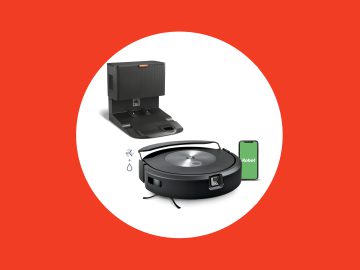Rachel Lyall, Mediaocean’s marketing director for EMEA and APAC, shares key insights from the 2024 H2 Advertising Market Report.
Technological advances, consumer behavior shifts and market dynamics are reshaping advertising. To gain insight into the key trends shaping the strategies of marketers in the latter half of 2024, we recently gathered data from more than 1,200 leading marketing professionals worldwide and published the results in our 2024 H2 Market Report.
For now, here are the top five trends shaping the industry.
1. Ad spending remains steady
Our research revealed that the industry is continuing to feel optimistic with a significant majority of respondents indicating they had plans to either maintain or increase spending across all channels.
For the remainder of the year, 66% of respondents plan to increase social media spending, 64% for digital display / video and 55% for connected TV (CTV). Meanwhile, 30%, 31% and 37%, respectively, will maintain their current investment levels in these channels.
Looking ahead to 2025, there are many factors to consider in annual planning, but with many economies returning to pre-pandemic output levels, ad budgets are expected to grow accordingly.
2. CTV overtakes AI as the leading consumer trend
When we asked marketers to rank the top consumer technology and media trends, CTV / streaming emerged as the most critical, with 56% naming it their top choice. This channel growth is partly organic, but it’s also driven by advertising budgets mirroring consumers’ continuing transition from traditional TV to CTV.
For example, with the rise of affordable free ad-supported streaming TV (FAST) channels like Pluto TV and advertising-based video on-demand (AVOD) platforms like Tubi, major streaming services are being prompted to rethink their business models and seek new revenue streams beyond subscriptions. Disney+, Netflix, and Amazon Prime have all introduced ad-supported hybrid tiers and many smaller players like SkyShowtime are following suit. The growing popularity of CTV can also be attributed to marketers prioritizing brand advertising and CTV’s ability to combine TV’s large canvas with the amenities of digital advertising, which makes it an ideal platform for brand campaigns.
While generative AI (genAI) previously took first place in our H1 2024 survey, with 55% citing it as a top priority, the technology has dropped to the second most critical trend. Although genAI remains a key innovation driver, some of the initial excitement may have levelled off as practical applications are now being implemented.
3. Research and analytics take priority over content creation in AI
When it comes to practical applications of AI, data analysis and market research remain the most prevalent, accounting for 45% and 40% of use cases. Meanwhile, copywriting and image generation hold a 27% and 22% share respectively. While we’re seeing AI help marketers with creative production, broader adoption will depend on responsible implementation and the training of large language models (LLMs).
Looking ahead, ad tech platforms are pouring resources into AI-driven solutions for creative development, audience insights and media decisions. As AI continues to evolve at an unprecedented pace, the scope of its applications and adoption rates are expected to surge.
4. First-party data mastery takes center stage
While performance-driven paid media remains the top investment priority, first-party data mastery has quickly emerged as the fastest-growing area of focus, which reflects the shift we’re seeing in industry priorities. Since our last survey, there has been a 25% increase in respondents citing first-party data as a critical capability, now reflected by 35% of survey takers.
This rise is in line with growing concerns around third-party data and the ever-evolving cookie crisis. From Apple’s introduction of Intelligent Tracking Protection (ITP) in 2017 to Google’s original plans to phase out cookies in Chrome, reliance on third-party data has been steadily decreasing.
Although Google recently announced it will no longer eliminate cookies but instead offer more visible opt-out options for consumers, the increasing importance of social media, CTV and other cookieless channels means that advertisers must embrace a multi-ID approach.
5. Measurement capabilities critical for ad verification
In response to the ongoing discussions around made-for-advertising (MFA) sites in digital media and the announcement that Oracle was exiting the ad tech business and shutting down Moat, our survey also sought to understand which aspects of the ad verification space matter most to marketers when choosing partners and assessing ROI.
Topping the list was measurements, with a strong preference for the Media Rating Council (MRC) accreditation and comprehensive reporting. Marketers rely on the trusted seal of approval from the MRC and solutions that address CTV impressions, desktop and mobile viewability, and SIVT (sophisticated invalid traffic) metrics. Combined with desktop, mobile display, and video ad-serving reporting, the capability provides marketers with a full omnichannel view of their media investment. Detailed reporting is essential to provide actionable insights, going beyond blind blocking of traffic or crediting of impressions that don’t meet specific criteria.
The second most important factor, according to respondents, was actionability – the ability to use data for real-time decision-making. This is critical for ad verification as it enables advertisers to be proactive with their media and apply insights to campaigns for performance optimisation. Comprehensive coverage across multiple channels, including walled gardens, open web, CTV ranked third, followed by integrations and cost. Additionally, marketers gain an edge with verification solutions that are seamlessly embedded into ad servers for streamlined workflows.
For a deeper dive into the report’s findings, Mediaocean recently hosted a webinar exploring the report’s core insights and key trends shaping the future of advertising with leading industry figures Karsten Weide, principal and chief analyst at W Media and Deborah Wahl, a Forbes CMO Hall of Fame member. The full recording is available for on-demand viewing.




